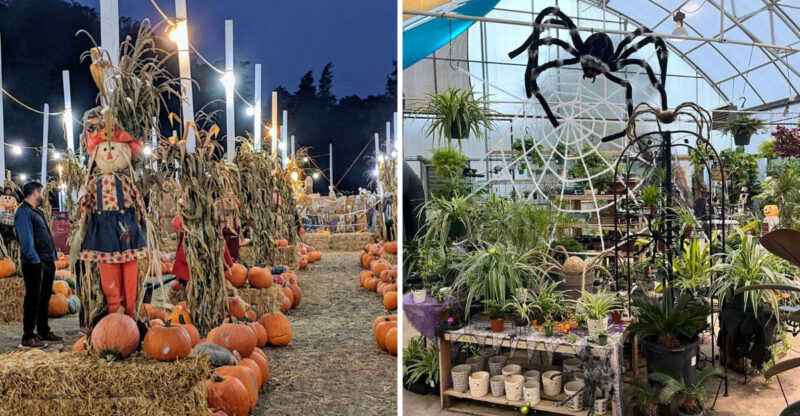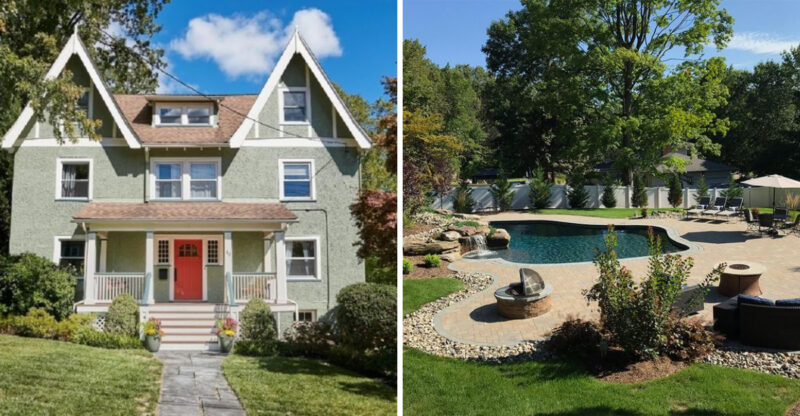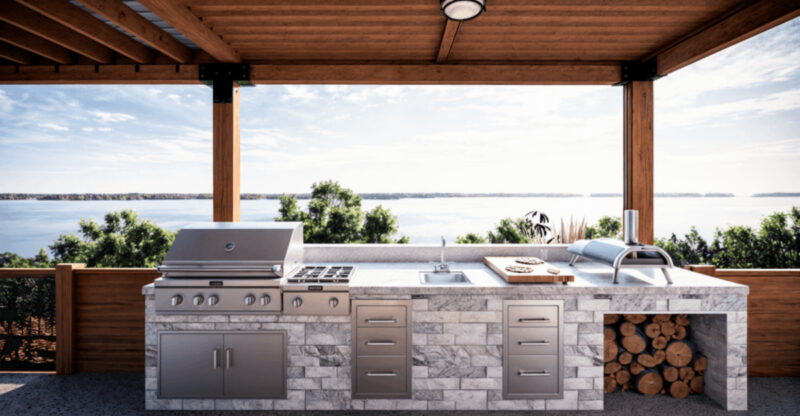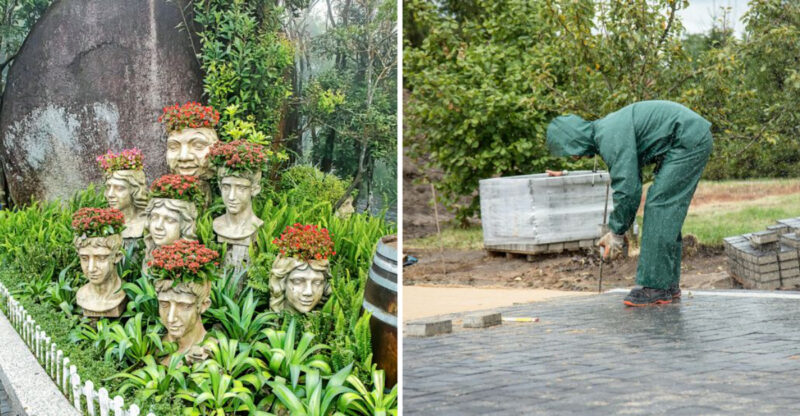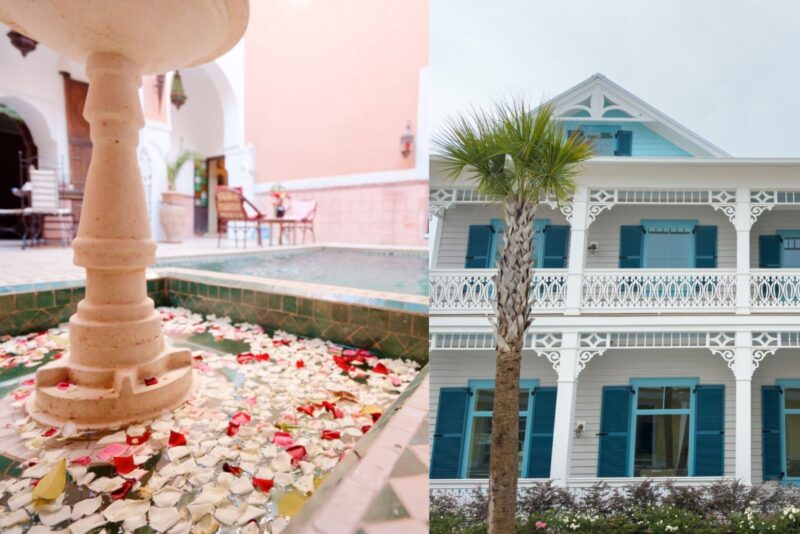Bad To Brilliant: 5 Desert Exterior Pitfalls, And 6 Arizona Ideas Worth Copying

Desert homes face unique challenges when it comes to outdoor design. The scorching sun, water scarcity, and extreme temperatures create a special set of problems for homeowners.
As a designer who’s transformed countless desert properties, I’ve seen the worst mistakes and the most inspiring solutions. Let’s explore what to avoid and what to embrace for a stunning desert exterior.
1. Grass Lawns That Guzzle Water
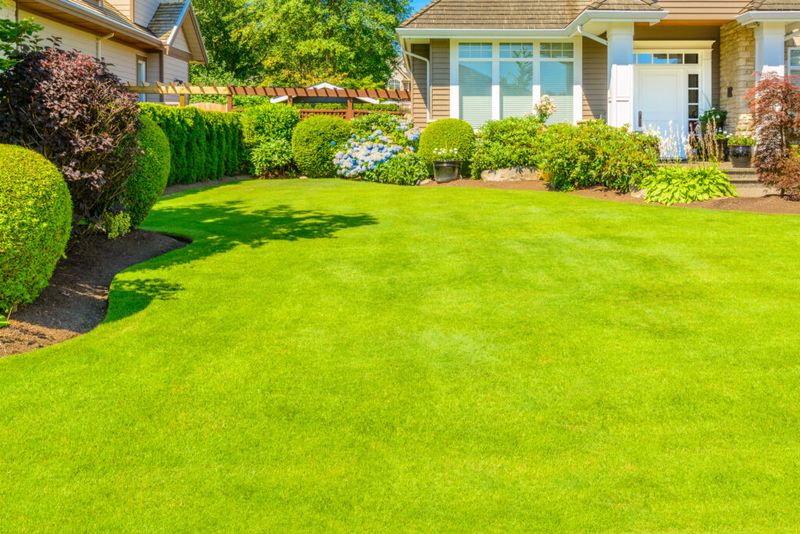
Green grass in the desert? Total madness! Your lawn slurps more water than a marathon runner in July, creating utility bills that’ll make you weep.
Traditional turf demands constant irrigation, fertilizers, and maintenance while looking stressed half the year anyway. Meanwhile, native desert plants thrive with minimal water.
Switch to alternatives like buffalo grass or synthetic turf if you absolutely need that green fix. Your wallet and the environment will send thank-you notes.
2. Faded Stucco With No Texture Or Color Depth
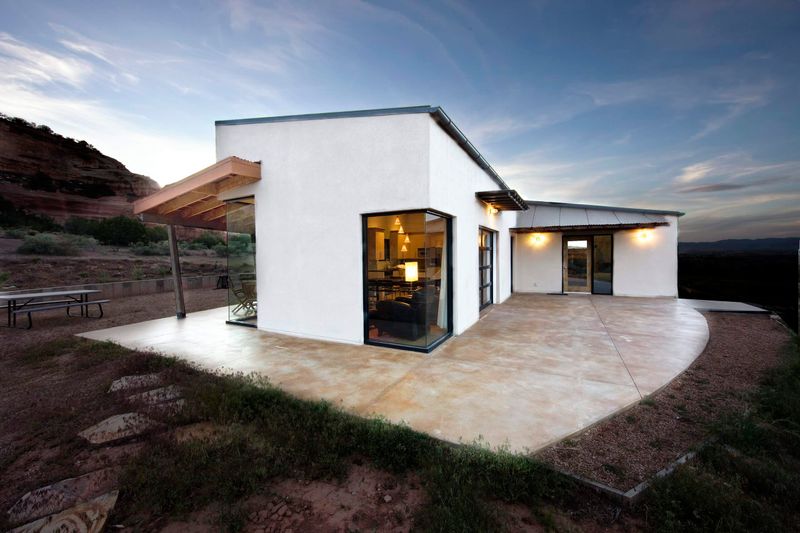
Nothing screams “I’ve given up” like flat, sun-bleached stucco that’s faded to a sad beige. The desert sun mercilessly exposes boring exteriors, making one-dimensional surfaces look cheap and tired.
Smart desert homes use layered textures and depth in their stucco application. Consider hand-troweled finishes or subtle color variations that create shadow play throughout the day.
Add dimension with embedded stone or tile accents that catch light differently as the sun moves across the sky.
3. Cheap Gravel With No Visual Interest
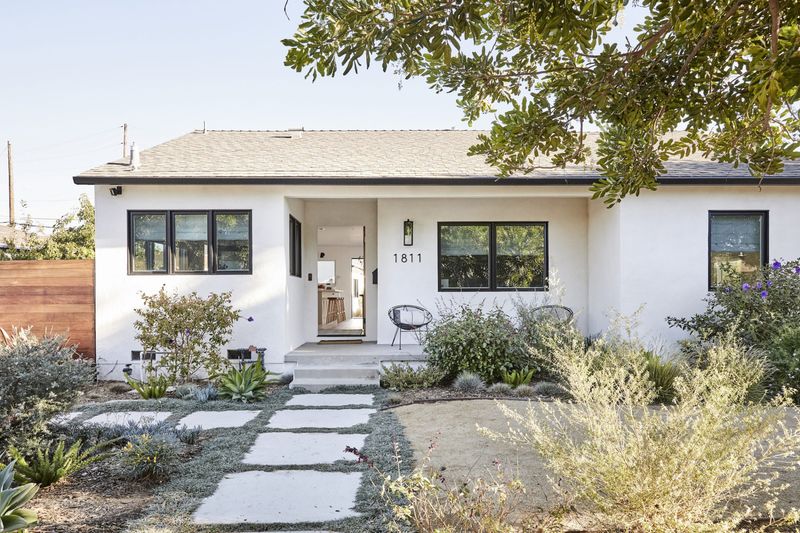
Throwing down a layer of generic gray gravel isn’t landscaping, it’s surrendering! Those sad little rocks turn your yard into a hot, boring parking lot.
Quality desert landscapes mix gravel sizes, colors, and textures. Try combining rusty-red decomposed granite with larger chocolate river rocks and accent stones.
Create visual rhythm by arranging stones in flowing patterns rather than uniform blankets. Add sculpture-like boulders as focal points to break up the monotony and anchor your design.
4. Neglected Cactus Beds And Overgrown Agave
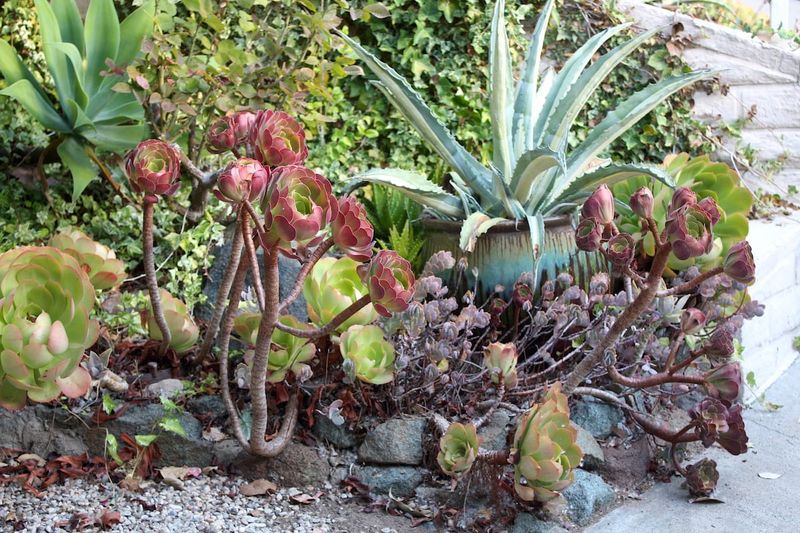
Zombie cacti aren’t cute! Those yellow, stretched-out specimens and sprawling agave monsters make your yard look abandoned rather than designed.
Healthy desert plants need proper spacing, occasional trimming, and removal of dead growth. When neglected, they lose their architectural quality and sculptural appeal.
Arrange succulents with intention, group similar species, vary heights, and create rhythm. Replace damaged specimens promptly and remove pups (baby plants) from agaves to maintain their striking geometric forms.
5. Lack Of Shade Or Cooling Features Like Awnings Or Pergolas
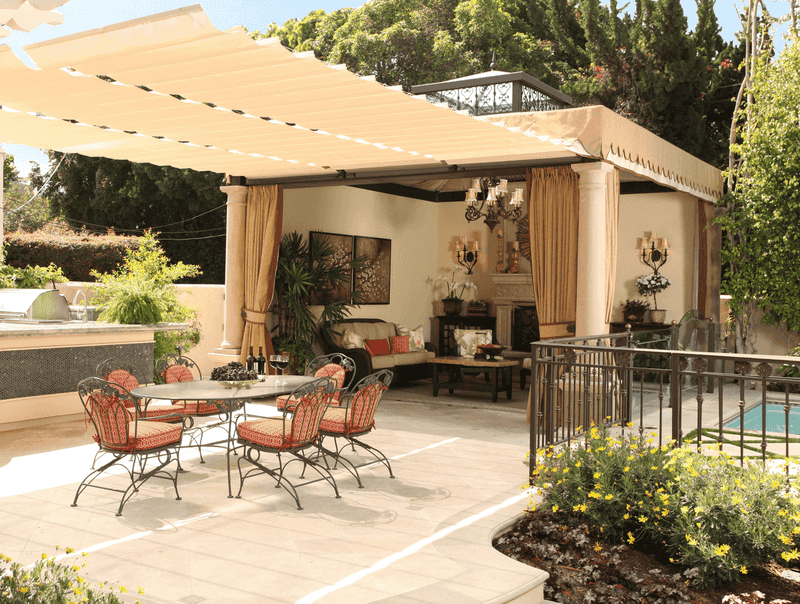
Scorching desert homes without shade are basically outdoor ovens. Without protection, your patio furniture fades, metal fixtures become untouchable, and outdoor living becomes impossible for half the year.
Strategic shade isn’t just comfort, it’s survival in desert climates. Properly designed overhangs can reduce indoor temperatures by up to 20 degrees.
Think beyond umbrellas. Retractable awnings, vine-covered pergolas, and architectural shade sails can transform brutal spaces into cool outdoor rooms while adding visual interest to your home’s silhouette.
6. Drought-Tolerant Native Landscaping
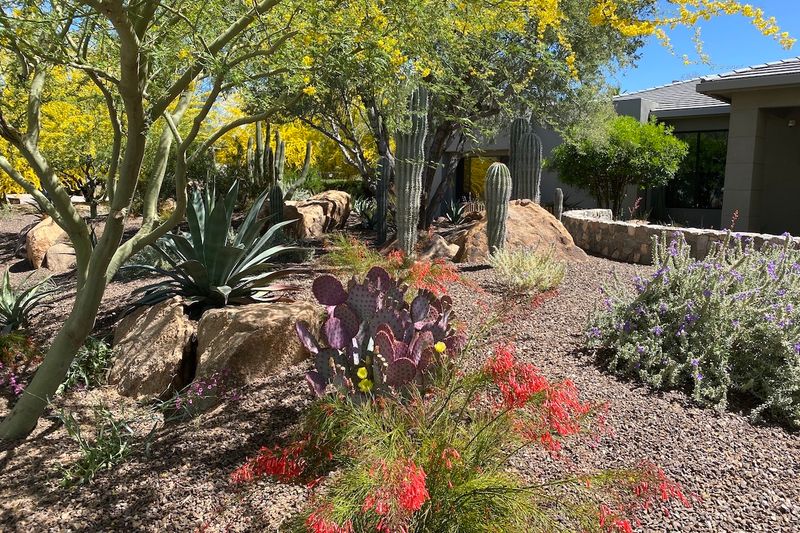
Think your desert yard has to be all rocks and regrets? Think again! Native plants are the true rock stars of Arizona landscaping, low drama, low water, and high style.
Ocotillo’s fiery spires and the desert spoon’s sculptural symmetry bring drama without the diva demands. Grouping these hardy heroes into “hydrozones” means you’re not just saving water, you’re landscaping like a pro.
Bonus? You’ll have hummingbirds and butterflies treating your yard like a five-star resort. From spring blooms to sculptural seed pods, native plants put on a seasonal show no garden gnome could dream of.
7. Terracotta Or Earth-Tone Paint That Blends With The Desert
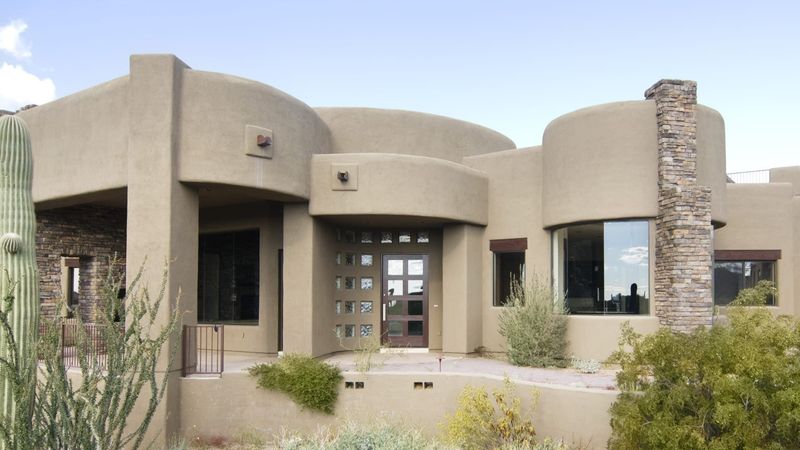
Forget bright white exteriors that blind you on sunny days. Smart desert homes embrace the landscape with warm terracotta, soft sage, or sandstone hues that harmonize with the surrounding environment.
Earth tones don’t just look better, they’re practical too. Natural pigments resist fading from intense UV exposure better than many synthetic colors.
Layer complementary shades for depth, like darker trim around windows or lighter accents on architectural details. This creates a subtle dimension that shifts beautifully as desert light changes throughout the day.
8. Creative Use Of Adobe Walls And Accent Tiles
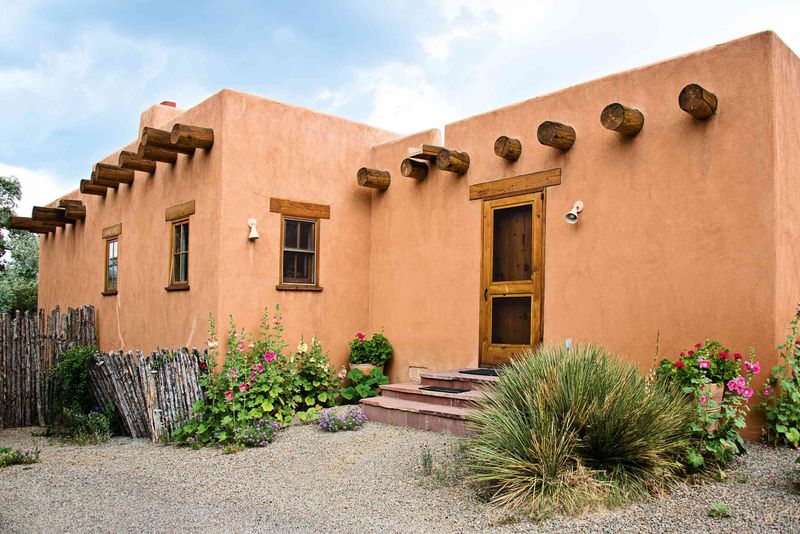
Adobe walls aren’t just for historical buildings, they’re desert magic! These thick earthen structures stay cool during blistering days and release warmth during chilly nights, naturally regulating temperature.
Modern interpretations mix traditional techniques with contemporary design. Think curved courtyard walls topped with colorful talavera tiles or geometric southwest patterns.
Even partial Adobe features, like a garden wall or outdoor kitchen, add authentic character while creating micro-climates for plants that need protection from harsh afternoon sun.
9. Courtyard Entrances With Desert Plants And Sculptural Elements
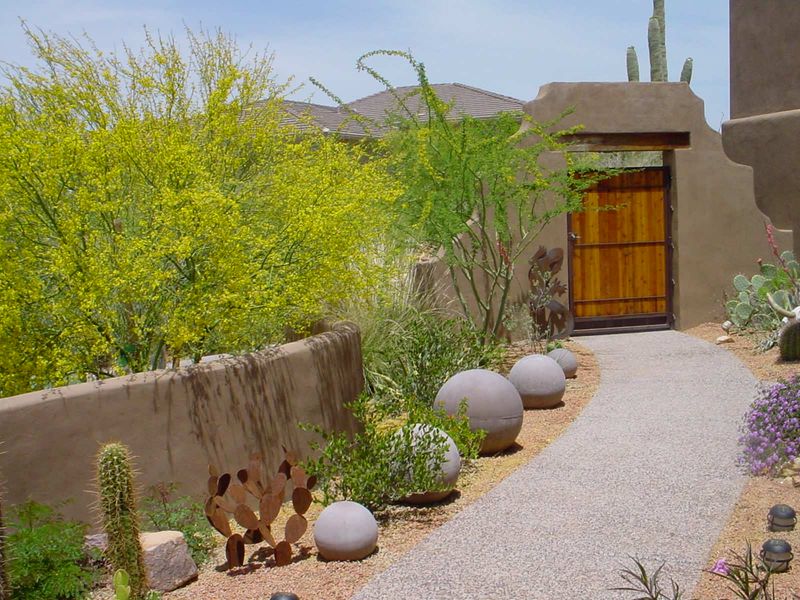
First impressions ALWAYS matter! A thoughtfully designed courtyard entrance creates a magical transition from public to private space while capturing the essence of desert living.
Frame entry paths with sculptural plants like barrel cactus or blue agave. Add a statement pot with trailing succulents or a dramatic yucca as a focal point.
Incorporate metal or stone sculptures that cast interesting shadows. Wind chimes or water features introduce gentle sound elements that make the space feel alive even on still days.
10. Functional Shading: Deep Overhangs, Slatted Pergolas, And Shade Sails
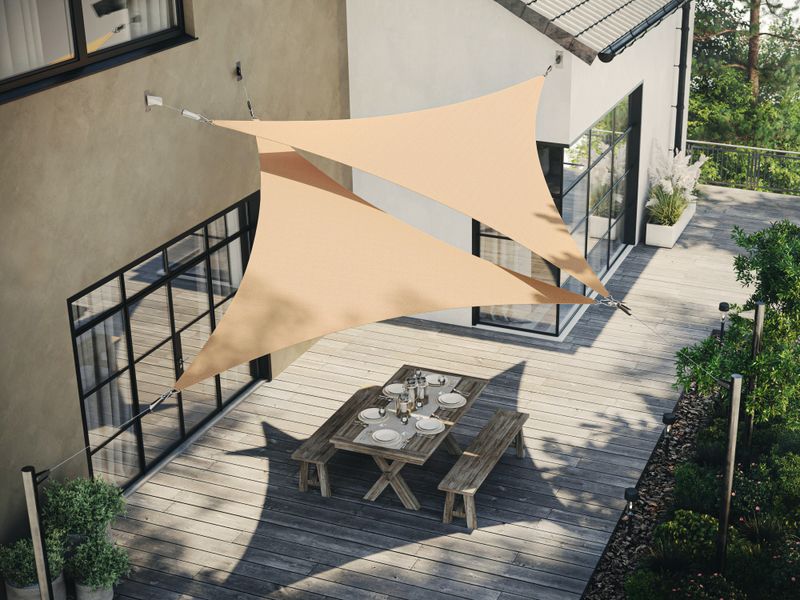
Smart desert design works with the sun, not against it! Deep roof overhangs block summer sun while welcoming winter warmth, pure passive solar genius.
Slatted wooden pergolas filter light beautifully, creating dynamic shadow patterns that change throughout the day. Angle the slats to block harsh afternoon rays while preserving mountain views.
For flexible spaces, tensioned shade sails offer affordable, sculptural solutions. Their curved forms add architectural interest while creating cool outdoor rooms where you can actually enjoy summer afternoons.
11. Rustic Desert Pathways With Flagstone Or Decomposed Granite
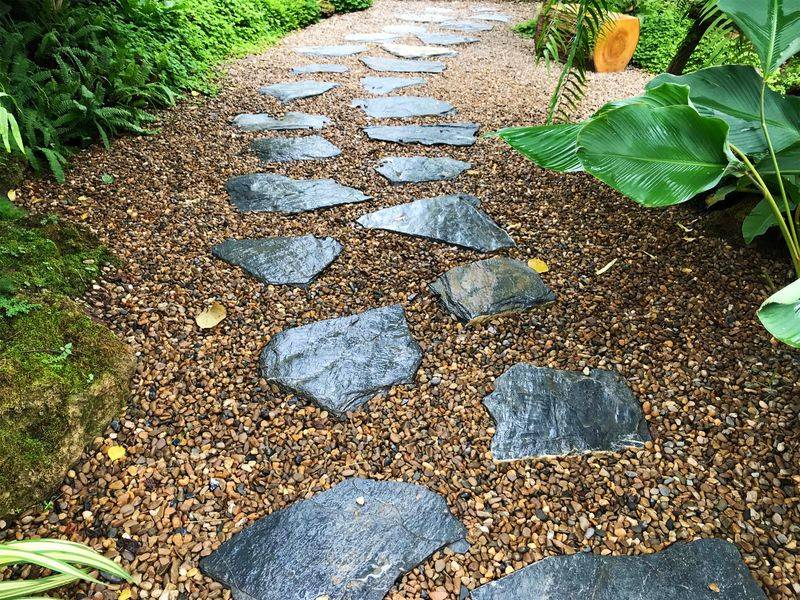
Why settle for scorched concrete slabs when your path could be a desert dream? A winding walkway should whisper adventure, not scream “driveway extension.”
Flagstone trails sprinkled with creeping thyme or native grasses feel like they belong, blending seamlessly into the landscape while letting rainwater do its thing. Their organic curves soften the scene and add storybook charm.
Prefer something crunchier? Decomposed granite delivers rustic elegance on a budget. Just edge it with stones or steel to keep your path from going rogue in the next monsoon.

